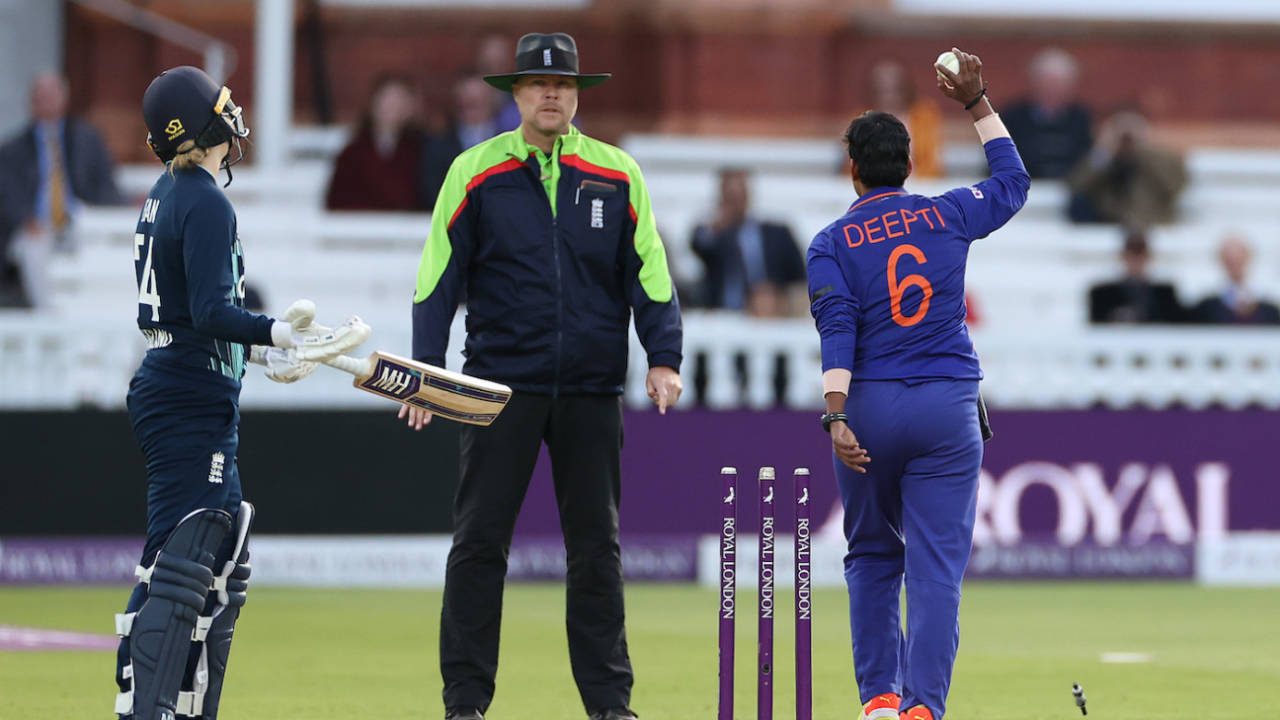MCC throws renewed support behind bowlers running out non-striker's leaving the crease
The MCC's World Cricket Committee put the onus on batters to keep the mode of dismissal out of the game.
Deepti Sharma runs out Charlie Dean backing up at the non-striker's end • Getty Images
What does cognitive psychology have to do with non-striker run outs?
Everything you need to know about manufacturing crazy cricket arguments on Twitter
Why is there stigma involved in running out a non-striker? Because it's all about power
Starc calls for short-run penalty if non-striker strays out of crease
Non-striker run outs and catches close to the ground shouldn't be as complicated as they are

Peter Della Penna is ESPNcricinfo's USA correspondent @PeterDellaPenna
